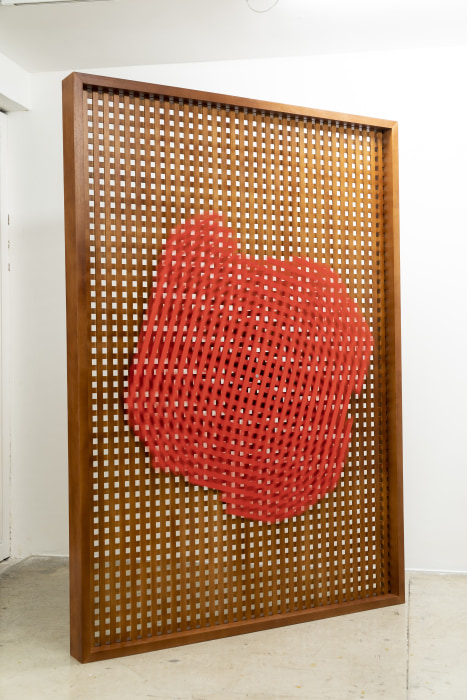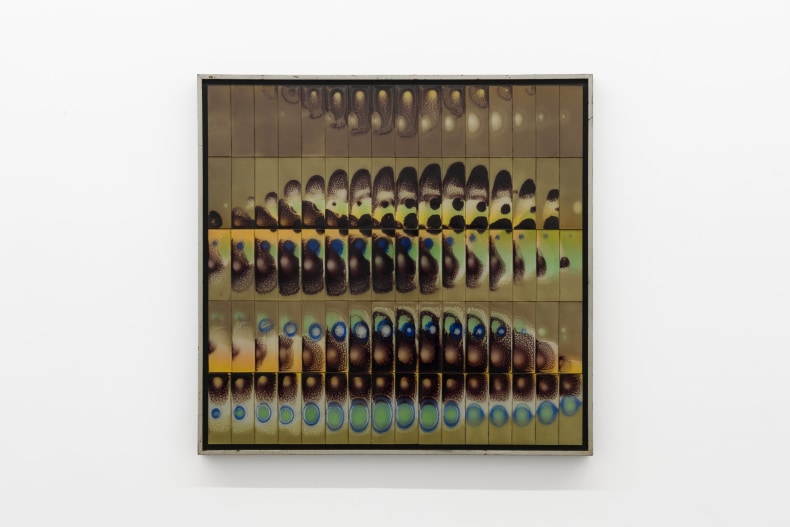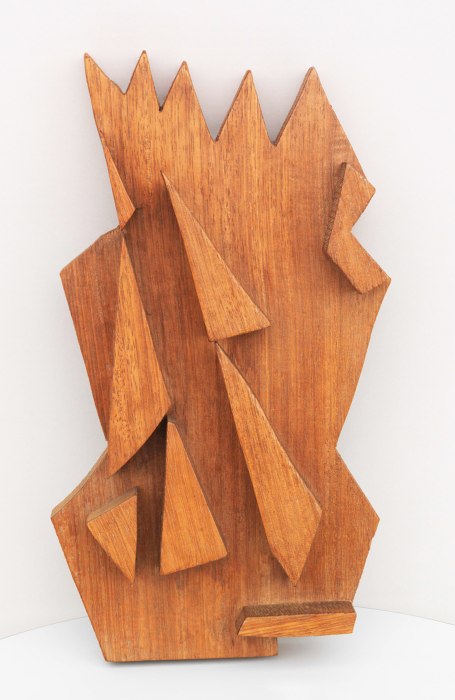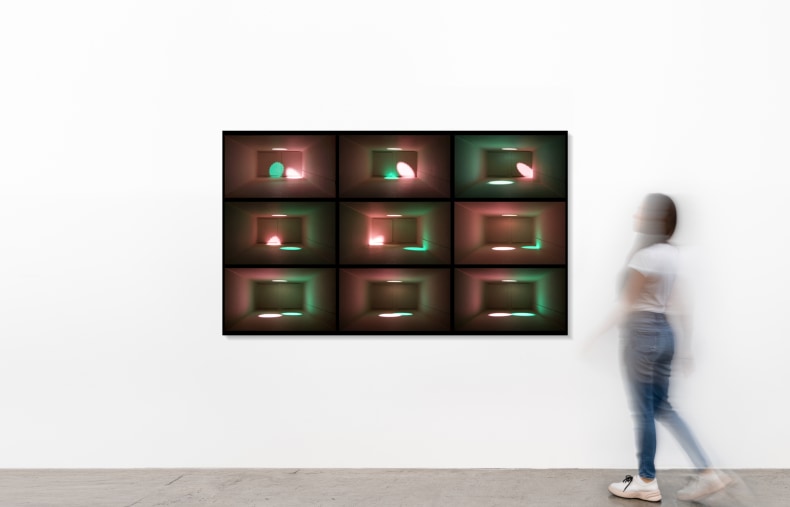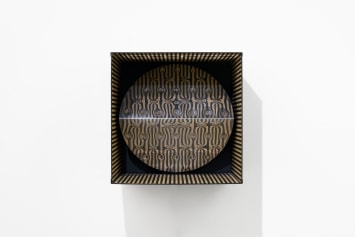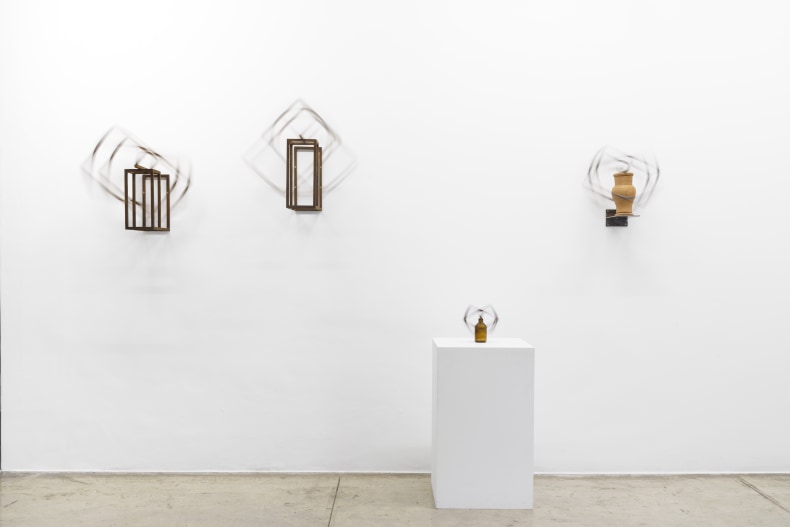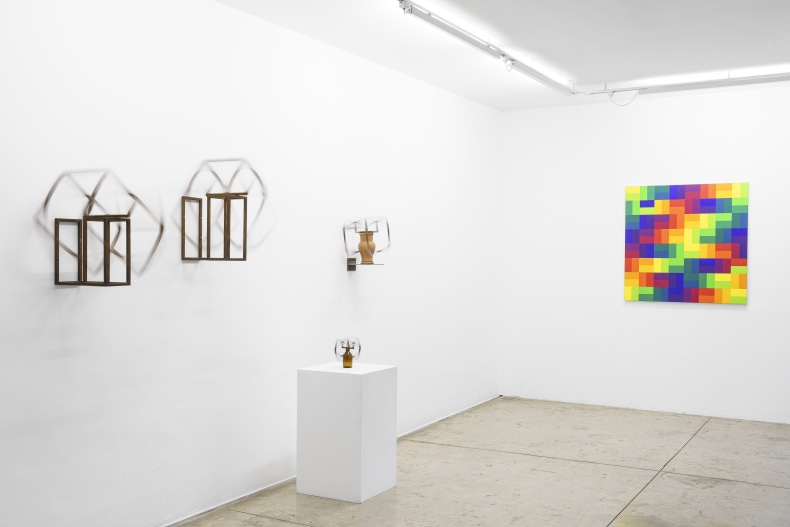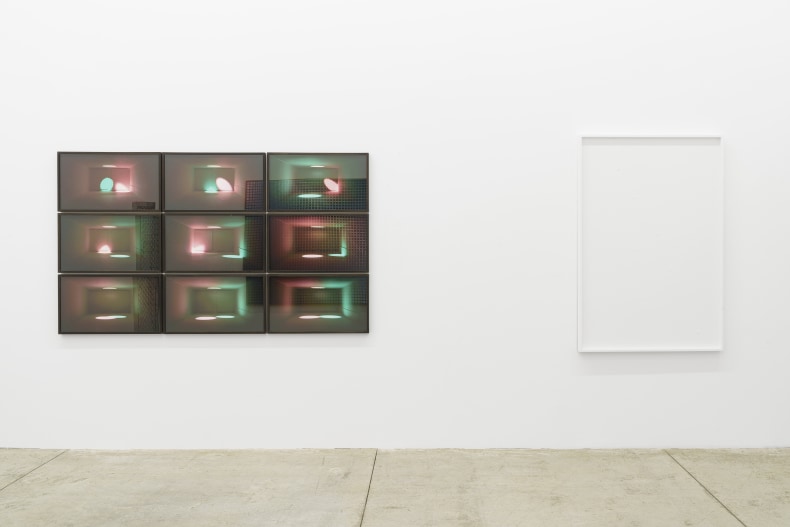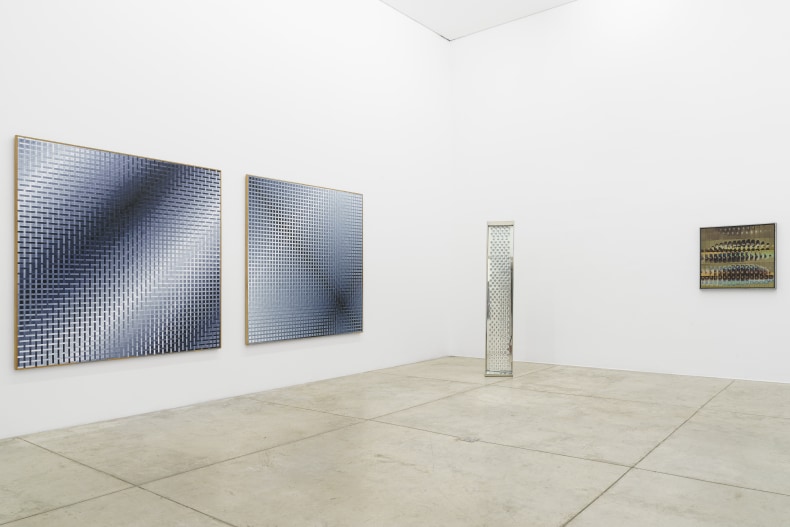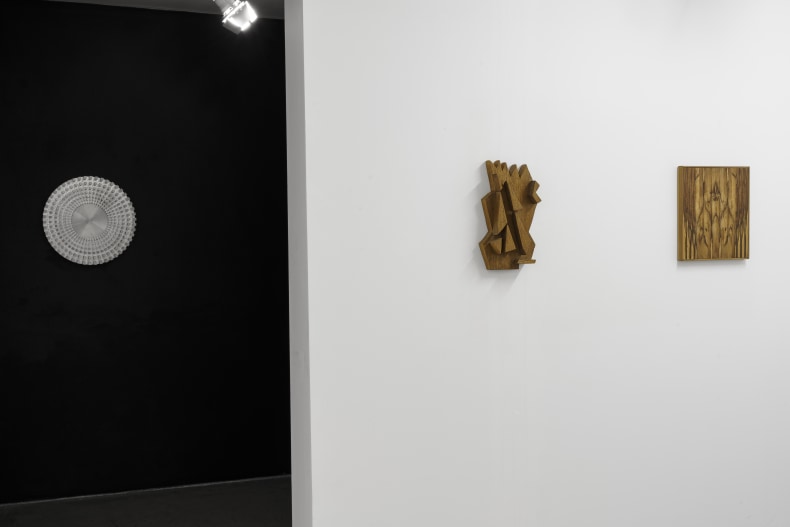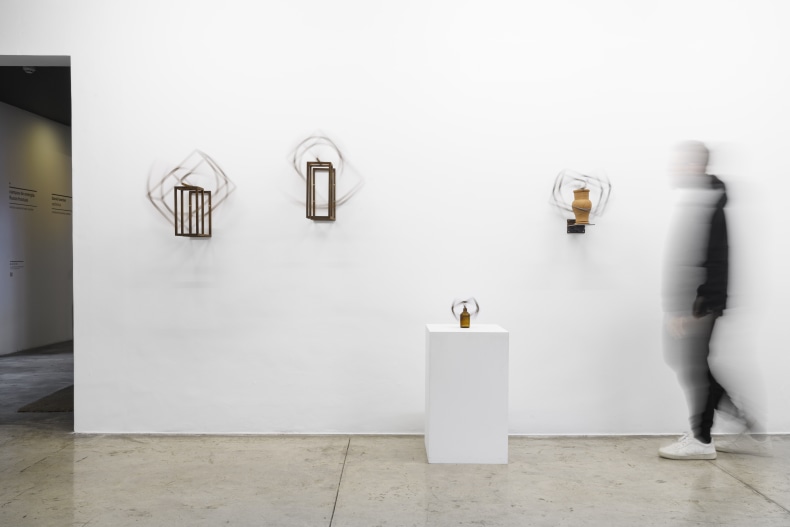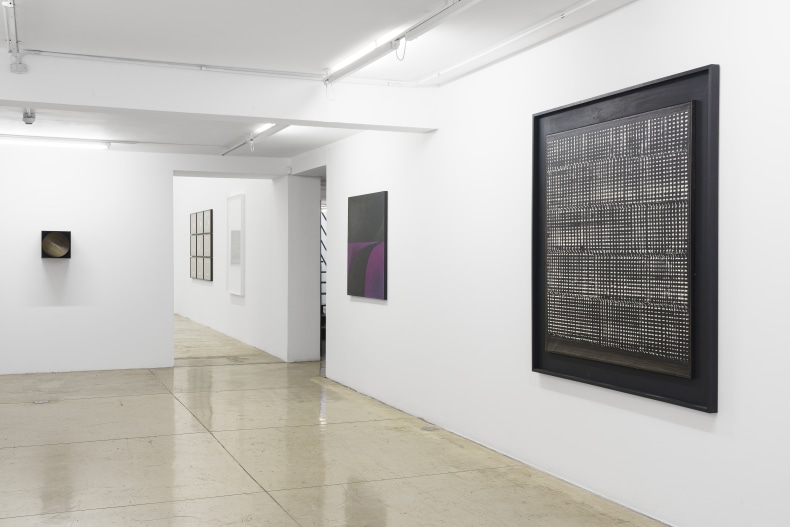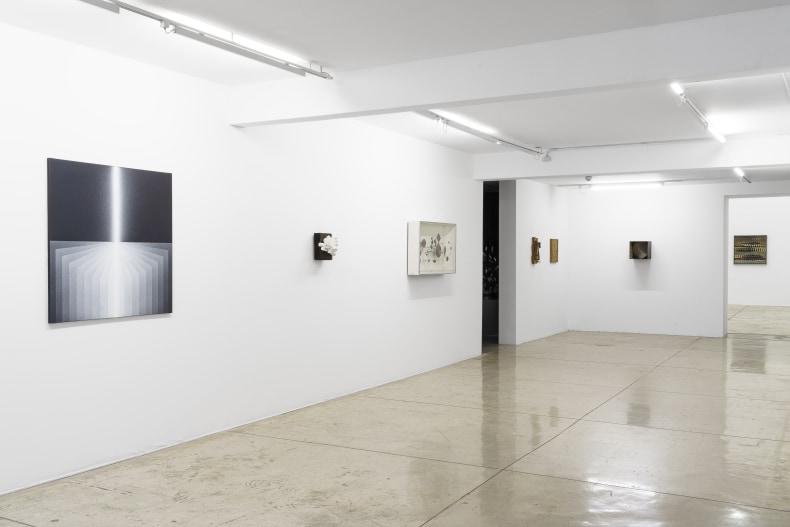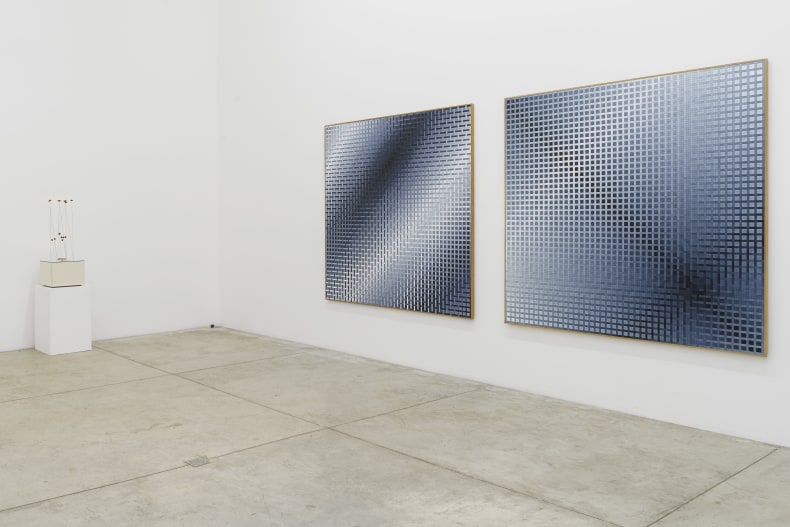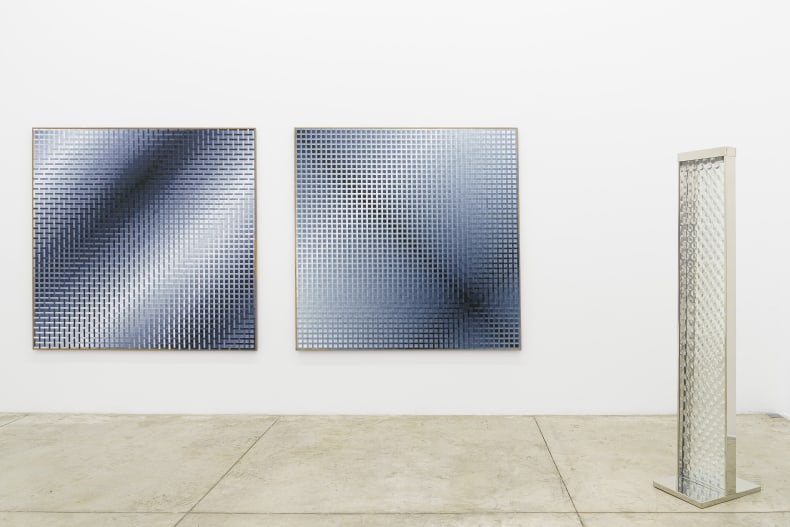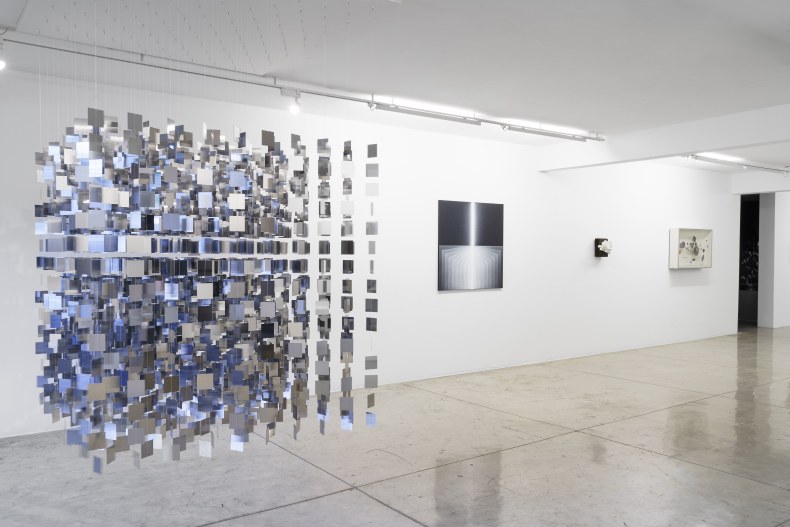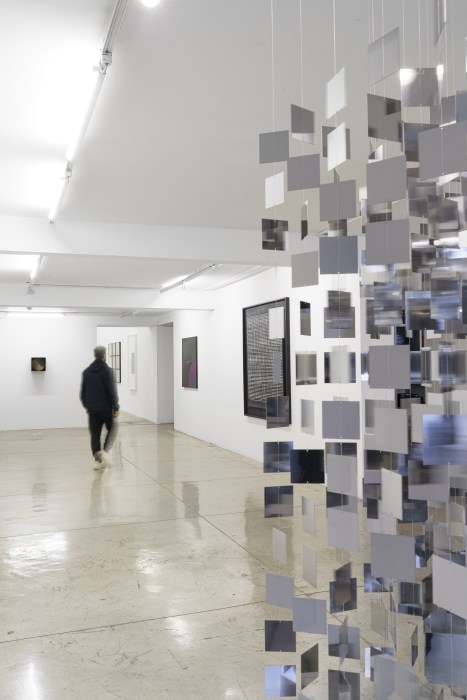Nara Roesler São Paulo is pleased to announce Fields of Energy: Fractal Flows, a collective exhibition organized by the gallery ‘s core curatorial team and Luis Pérez-Oramas. The exhibition presents a selection of different practices in the abstract-geometric field, from the organic geometry of Tomie Ohtake, to the algebraic and serial pragmatics of José Patrício and includes works by artists who have unveiled their own creative vibrations in the form of visual energies such as Abraham Palatnik, Heinz Mack, Julio Le Parc, Lucia Koch, Raul Mourão, Marco Maggi and Philippe Decrauzat. The exhibition is open for visitors from August 20th to October 1st, 2022.
In the mid-twentieth century, several artists working in Latin America and Europe created propositions that focused on the experience of looking. Informed by the trends of the abstract-geometric avant-gardes of the beginning of the century, especially those of Russian Constructivism and the Bauhaus movement and also guided by optical principles, the artists apply scientific rationality to the construction of expressive visual effects. As a result, the works fool the observer into perceiving static works as mobile and in turn, reveal to us the instability of the image, created intentionally by the artist.
In this sense, Palatnik, in Brazil, Mack, in Germany, and Le Parc, in Argentina, were pioneers in the development of works that relied on elementary and geometric shapes to create visual propositions in which the real or virtual movement, given by the rhythm and dynamics of the composition, actively challenged the public eye, producing surprising effects, optical illusions and perplexing sensations.
The works presented in Fields of Energy: Fractal Flows reveal not only the specificities of the development of kinetic and optical experiences but also propose a contemporary reinterpretation of this chapter of modern art.
The manifestation, kinetic or not, of energetic visual fields responds to the ancient, Orphic dimension, through which art reproduces, in both its objects and mechanisms, the impulses of nature as energy. Beyond the orthogonal dimension, the works on display respond to a fractal understanding of surfaces as spaces of endless striations and folds: fractal flows. Now, at a time in which we can see the progressive return of these figurative practices, the exhibition allows us to continue echoing the cultural importance of these radical works.
In many of the works, we can find repetition, progression, contrast and gradation, as seen in the work of José Patrício, who makes use of objects found in everyday life and organizes them in ways that amplify the characteristics of the materials, creating different rhythmic layers by the way he manages color, texture, shape, intervals and the position of each object. We can also find these principles in Palatnik’s practice, where, in his work Progressão Jacarandá (1968), he reorganizes wooden slats in order to create visual rhythms that reproduce surface fractals by the juxtaposition of the natural wooden grain.
Decrauzat and Le Parc, in turn, introduce compositional elements that bring small distortions – folds or geometric “accidents” that produce visual effects – or permutations in shapes and colors capable of deceiving the eye.
The work of Ohtake and Maggi, in turn, translates into compositions in which the motion itself seems to offer deviations from the constructive vocabulary, leading us to perceive the tensions generated by the encounters between the mechanical and the artisanal, organic and the inorganic, real and virtual and the rational and expressive. In this articulation of individual practices, Fields of Energy: Fractal Flows aims to understand how each of the works constitute a space that condenses the actions of an artist into the creation of a form.
The work continues to emanate, through the internal vibration of its fractal flows, its lines, surfaces, textures and colors, generating unpredictable figures and effects –, the power of creative acts that determine in the audience, the dynamics of a perceptive encounter with the works.

